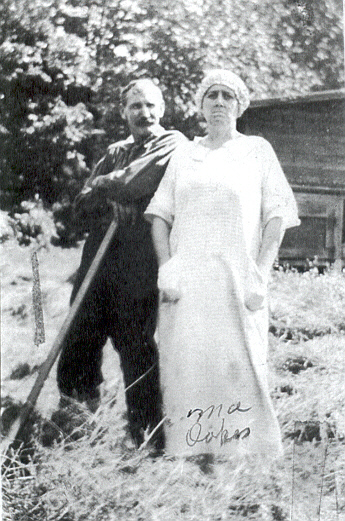
Jeff and Major were two very large Irish terriers owned by Frederick Trevor Hill, a well-to-do attorney on Wall Street and a prolific author of novels about politics and the law. The dogs were trained as police dogs.
On February 20, 1925, the two Irish terriers came to the rescue of Mary Elizabeth Donnet, a 62-year-old grandmother and a member of the prominent Whitehouse family of New York City and Irvington-on-the-Hudson.
Mary Elizabeth was the only daughter of John Henry Whitehouse and Mary Schenck. J.H. Whitehouse was a senior partner at Whitehouse & Co., one of New York City’s oldest banking and brokerage firms. At the time of his death in 1924, the 90-year-old Whitehouse was the oldest member of the New York Stock Exchange.
Mary Schenck was a distant relative of Sarah Rapelje, one of the first white European Christian girls to live in the Dutch colony of New Netherland. Sarah, the daughter of Joris Jansen Rapelje and Catalina Trico, was born June 9, 1625, at Fort Orange (Albany). She grew up in the area of Brooklyn known by the Lenape Indians as “Rennegachonk” — today the site of the Brooklyn Navy Yard.
J.H. Whitehouse and Mary Schenck had five children, including Mary Elizabeth and four sons: John Schenck, Edward Julius, James Norman de Rapelje, and Henry Remsen. In 1888, the couple bought a private school owned by a Miss Halpine – originally the 1860s estate of James L. Adams – at 35 South Broadway in Irvington. They restored it as a country home and named it The Larches. The Larches included 16 acres of land on the corner of Broadway and Harriman Avenue.
Two years later, on August 5, 1890, Mary married James John Conway Donnet. Lt. Col. Donnet was a surgeon with the Royal Army Medical Corps of the British Army. Although Mr. and Mrs. Donnet spent many years living abroad, including 15 years in India, they frequently visited Mary’s parents at The Larches in Irvington.
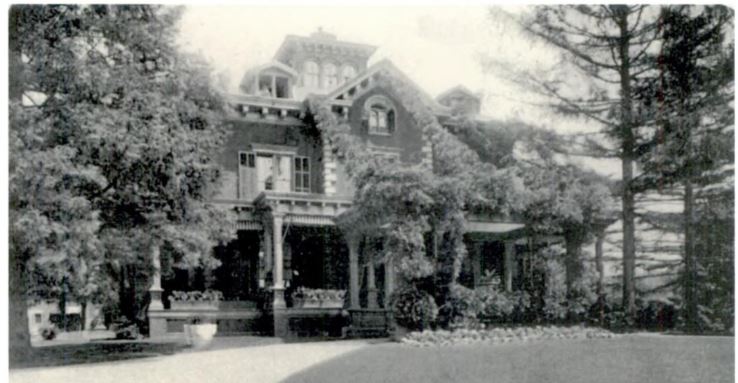
The Walk to Woodlands Lake
It was about noon on Friday, the 20th of February, when Mary decided to take three of her dogs, including Jappy, her Japanese spaniel, on a 2½-mile walk from The Larches to Woodlands Lake in Ardsley. Along the way, four other dogs joined them: a dachshund, an Irish terrier belonging to architect Arthur Loomis Harmon (whose firm designed the Empire State Building), and the two Irish terriers, Major and Jeff.
Mary loved dogs, and they knew it. She was like a Pied-Piper to the neighborhood canines.
As Mary was walking with the Irish terriers and the other dogs along the west shore of the frozen lake, the dogs apparently spotted a rabbit and took after it across the ice. About halfway across, where the current of the Saw Mill River runs, the ice gave way and all seven dogs submerged into the freezing water.
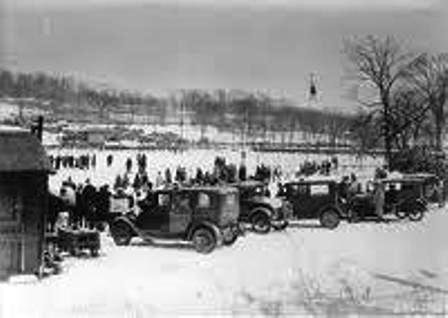
The Heroic Rescue
Mary removed her jacket and skirt, and clad only in knickers, crawled across the lake to the hole, shoving a short wooden bench in front of her. Her intention was to push the bench into the hole so the Irish terriers and other dogs could make purchase and leap onto the solid ice. Unfortunately, the ice cracked and Mary fell into the lake with the dogs.
The dogs immediately started clawing at her, expecting her to save them. So she slid the seat of the bench out on the ice, put one arm around the bench, and grabbed the dogs one by one with her other arm.
The dogs clamored over her back and onto the bench, and then stepped onto the solid ice. Cold and whimpering with fright, all except the two Irish terrier police dogs scampered to shore.
Although all but one of the dogs had gotten out of the water safely — the little dachshund was swept under and was probably pulled over the dam – Mary was still struggling in the water. As reported in The Hastings Echo of Dobbs Ferry, NY, Jeff and Major, “with true canine-human instincts” and being the stronger of the dogs, tried to save her by getting close enough to the hole and tugging at her sweater.
Jeff, who was 120 pounds, actually got a piece of her sweater in his mouth from tugging so hard, but then he fell into the water again. Mary grabbed Jeff’s collar and kept his head above water while shouting as loud as she could. Meanwhile, Major stood by, sending out SOS barks.
Luckily for Mary and Jeff, Charles W. Oakes, superintendent of an ice storage house, lived with his wife, Jessie, in a cottage on a hill above the lake. Mrs. Oakes heard the barks and alerted her husband, who ran to the lake with another neighbor. They got a long rope from the ice house and tied it to a tree.
Mr. Oakes then crawled out and tossed the rope until Mary caught it. Grasping the half-conscious police dog, she got to more solid ice and was pulled from the water.
Mary, who had been in the icy water for about 20 minutes, was taken to the nearby Woodlands Hotel, where the caretakers, Mr. and Mrs. Rhinehart, ministered to her. She was unconscious for about four hours, but was treated by Dr. Eben Smith of Irvington for frostbitten fingers and bruises to her chest and arms.
A week later, her attorney, Frederick Trevor Hill. convinced Mary to give consent to the publication of the story. He told her that such a story of heroism “and the romantic conduct of the dogs would be a wholesome relief from the depressing routine of crime and misfortune in the day’s news.”
Mary related her story of the Irish terriers to reporters, and told them her next plans included getting her snow-white hair, which she wore in a bob, fixed up in town.
The news of the heroic rescues caught the eye of Nathalie Morris (nee, Alletta Nathalie Lorillard Bailey), the wife of Lewis Gouveneur Morris, a distant descendant of Lewis Morris, one of the signers of the Declaration of Independence. An avid dog lover, Nathalie was vice president of the New York League for Animals. She called a meeting in her home and arranged that a medal for heroism be awarded to Mary Donnet.
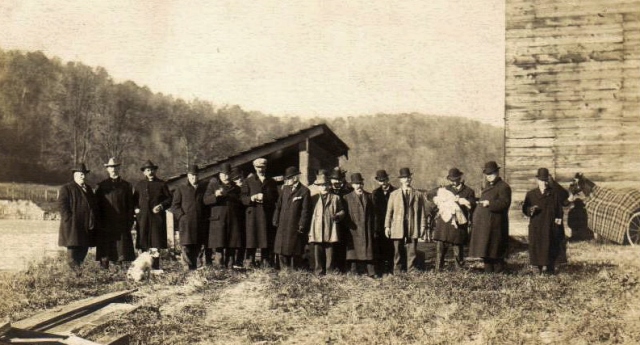
In addition to the League’s medal, Mary was also awarded the Distinguished Service Medal of the American Society for the Prevention of Cruelty to Animals. She received a loving cup engraved with the names of the dogs she saved and was made an honorary member of the A.S.P.C.A.
A letter published in The Hastings Echo stated, “If ever a Humane Society’s medal was nobly earned it’s in this particular case. All well wishers of ‘Man’s Faithful Friend’—members of the canine world—trust that this heroic Mem-Sahib…has gotten over her wintry hike in the woods surrounding her home, and her immersion in the icy water of Woodlands lake in rescuing her hiking companions…from meeting the fate of the handicapped short legged dachshund.”
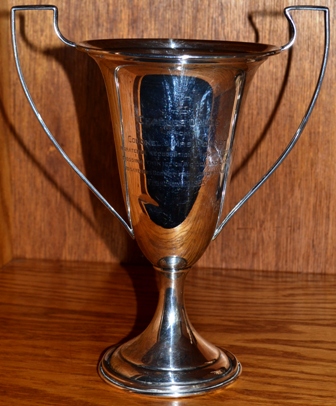
Dog Lover Was a Big-Game Hunter
I have to wonder if the League knew about Mary’s previous life as a big-game hunter in India. According to a 1909 issue of the New York Herald, during her 15 years in India, Mary shot four tigers, six bears, four panthers, 70 blue bulls, and 60 hyenas.
In a 1903 issue of the Waterville Times, it was reported that Mary wrote a letter to her parents about one such hunting trip India: “I am the proud slayer of the largest tiger ever shot in India, and he fell at my first shot…I had already shot three bears, two panthers and a tiger, besides all sorts of other smaller beasts…”
Woodlands Lake in the Early Years
The land where Woodlands Lake is located was originally owned by Loyalist Fredrick Philipse III (he controlled 52,000 acres of what is now Westchester County) and was part of Philipsburg (Philipse) Manor in the seventeenth and eighteenth centuries. After the American Revolution, the land was confiscated by the New York State Legislature and sold at public auction to Jonathan Odell, a patriot. For several decades in the nineteenth century, grain and lumber mills powered by water from the Nepperhan Creek (Saw Mill River) were operated near this site.
Woodlands Lake was created by damming the Saw Mill River, which is a tributary of the Hudson River. In the late 1800s and early 1900s, the lake was used for boating and swimming in the summer, and for ice skating and an annual winter carnival in the colder months. The area also featured the Woodlands Lake Hotel, which was a popular resort for New York City residents. The hotel was located by the Woodlands Lake dam and waterfalls, on the state road between Ardsley and Elmsford.

In March 1900, The New York Times reported that many men were taking the train to Woodlands to visit the Woodlands Hotel for treatment of nervous disorders. It turned out the hotel was operating an illegal poolroom started by Harlem bookmakers. A reporter visited the hotel, where he found a room with many men sitting at a bar and drinking red liquid from small glasses. The reporter said none of the men looked like invalids.
According to the report, a man named Mr. Fleming came out and told the reporter that the place was a sanitarium for the treatment of general disability, and was run by a private athletic club. A big bloodhound escorted the reporter back to the train tracks. Sheriff William V. Malloy was reportedly looking into the institution when the article was published.
V.E. Macy Park
The following year after Mary Donnet’s ice rescue, 172 acres of land belonging to the J.P. Morgan estate and including Woodlands Lake was acquired by Westchester County for $157,000 and turned into a park. Today the park is known as V.E. Macy Park, after V. Everit Macy, who was Westchester’s first Commissioner of Public Welfare. Dogs are allowed in the park, but they must be on a leash.
If you enjoyed this story about Mary and the heroic Irish terriers, you may want to click here to read about a BMT motorman on the Astoria Line who also received an award for humane service from the New York Women’s League for Animals for saving a Pomeranian.

Following the death of Mary Schenck Whitehouse in 1928, the family’s estate was sold at auction. In 1951, the Cedar Hill Garden Apartments were built at 35 South Broadway, where The Larches once stood.



